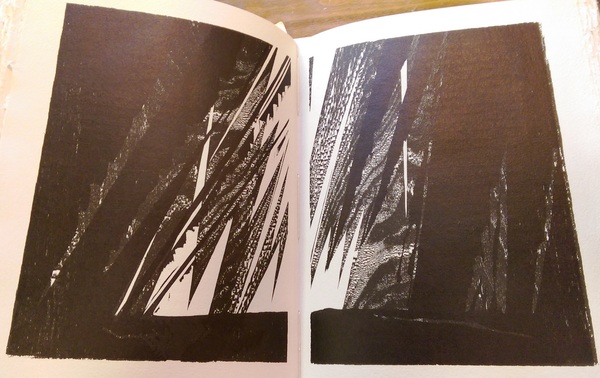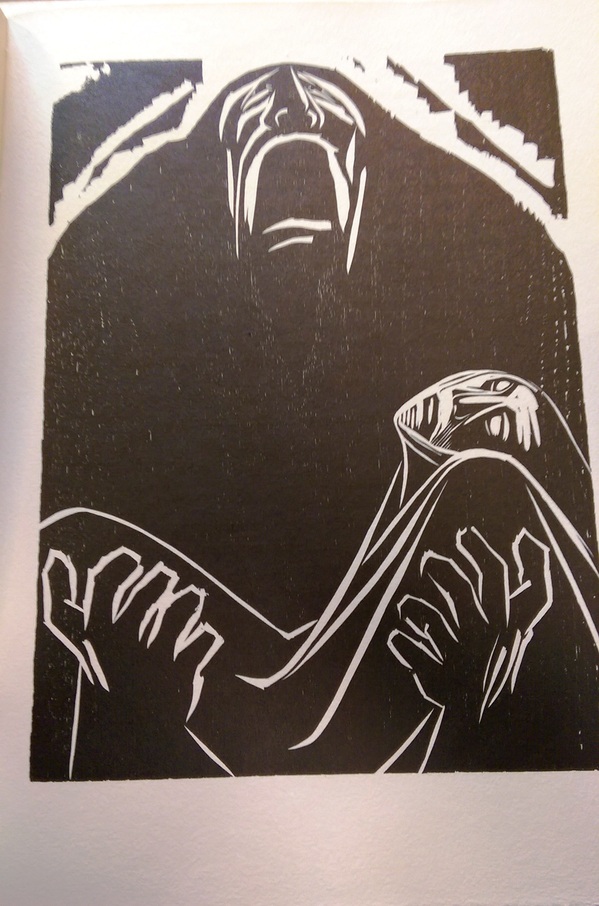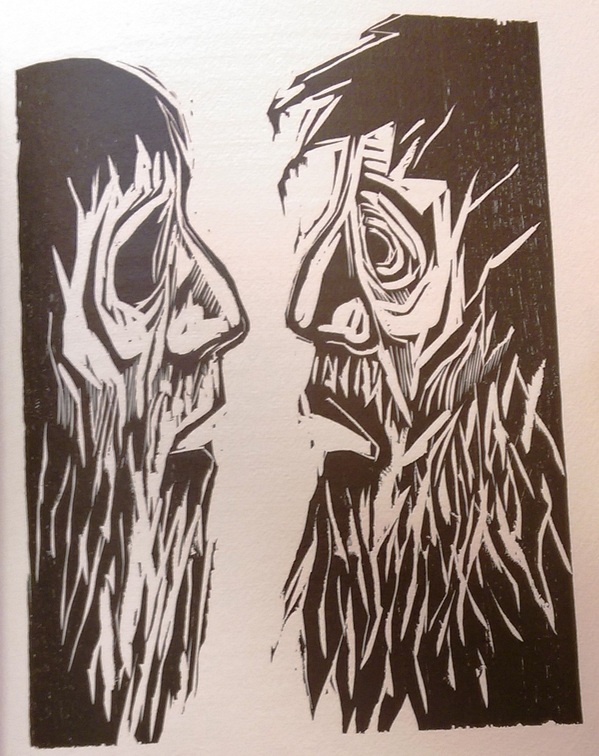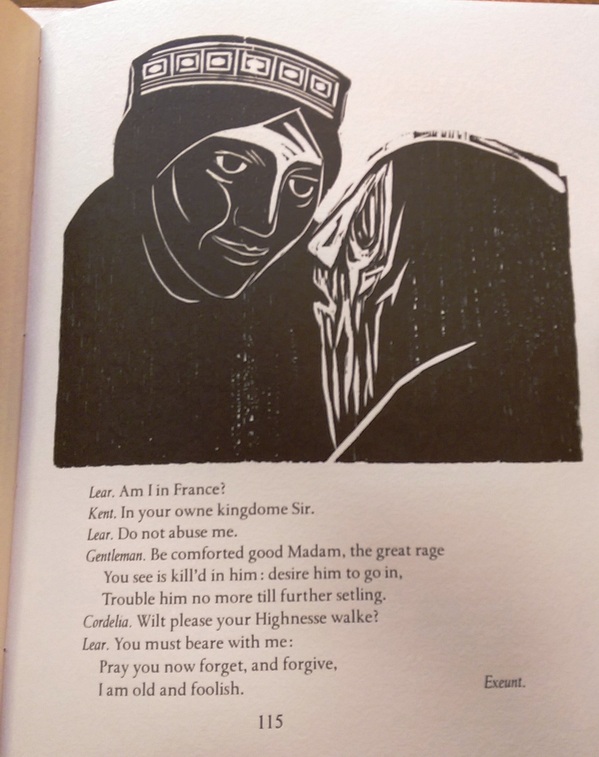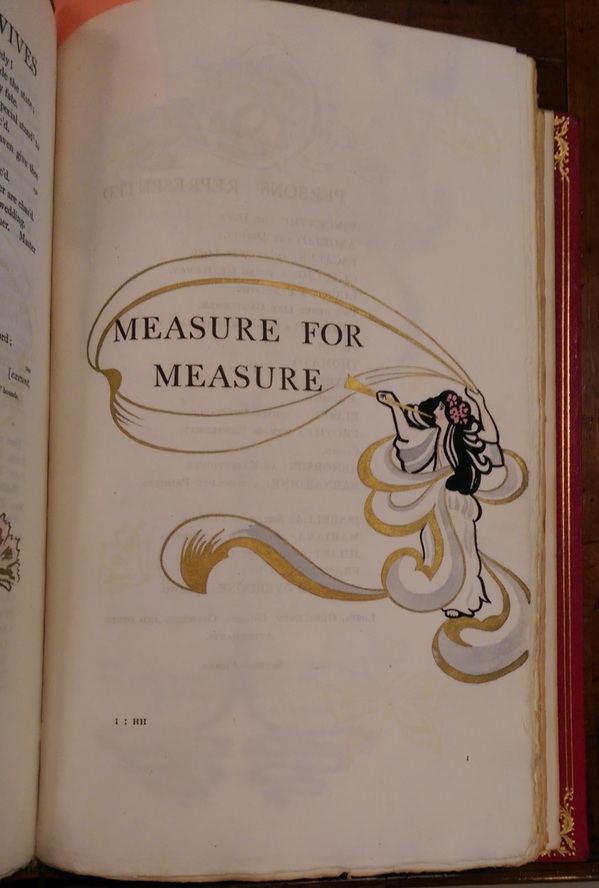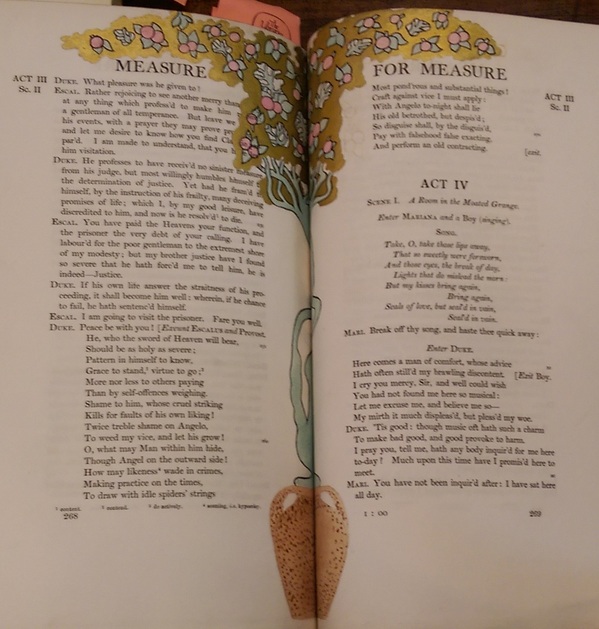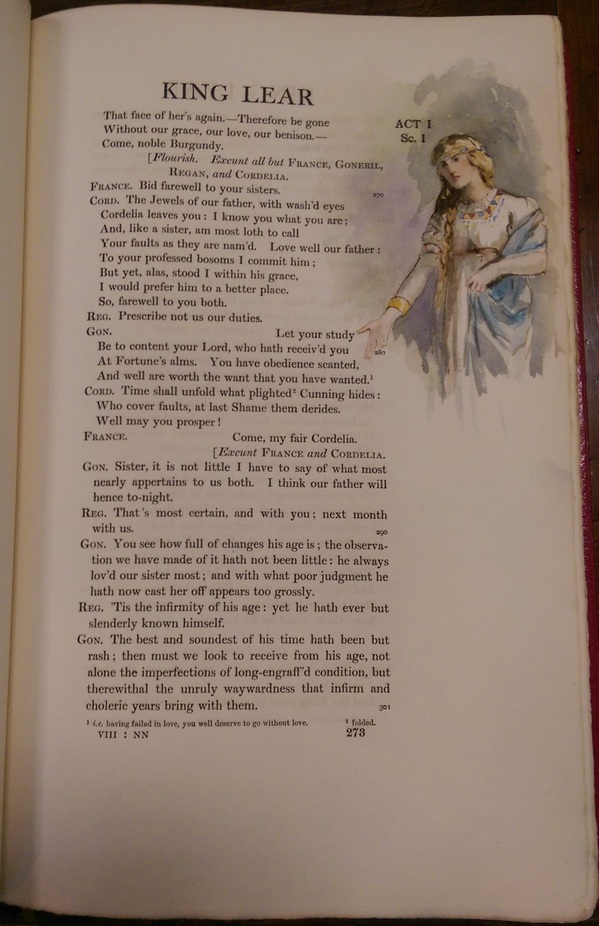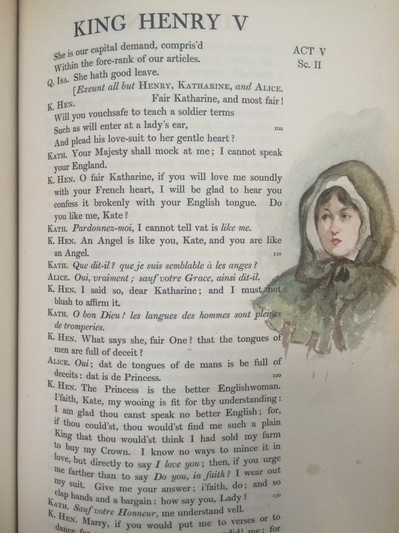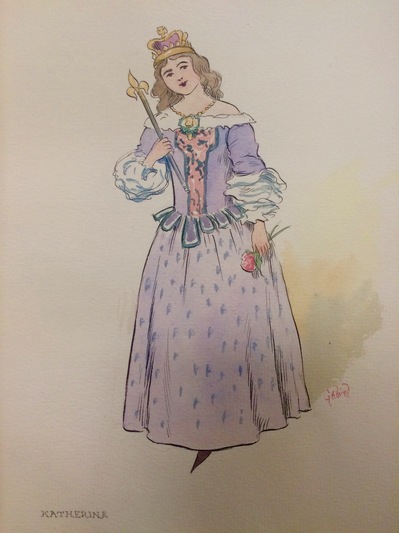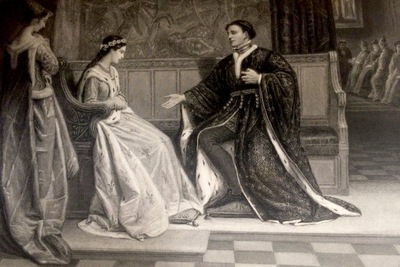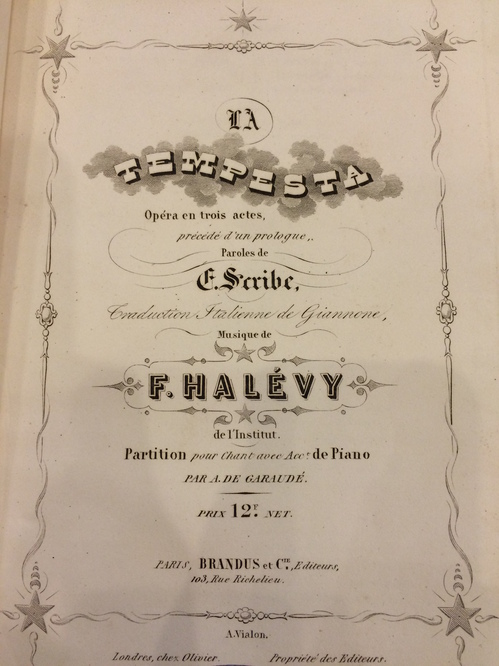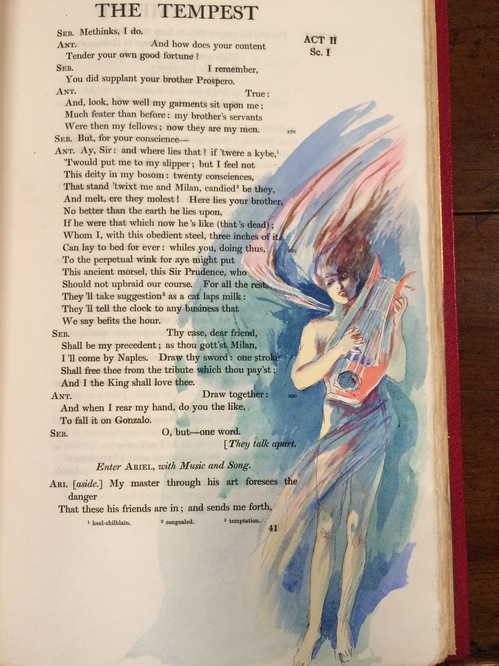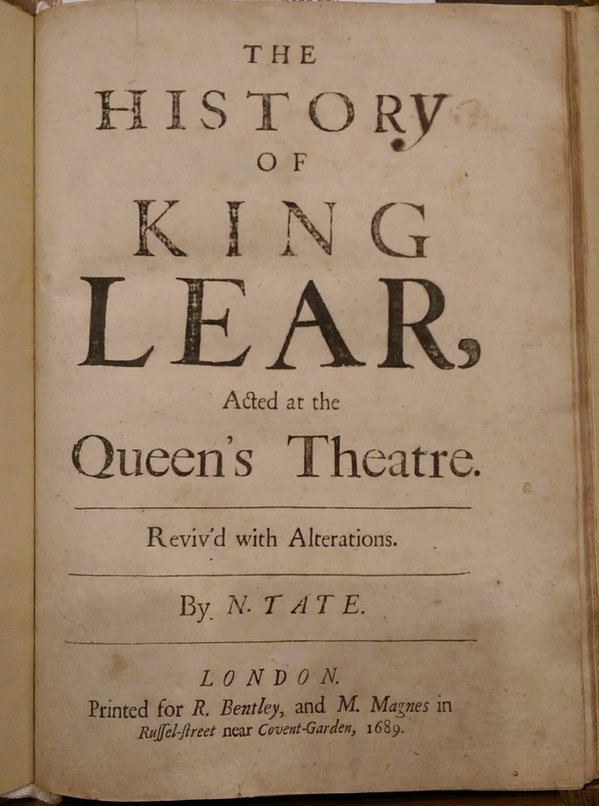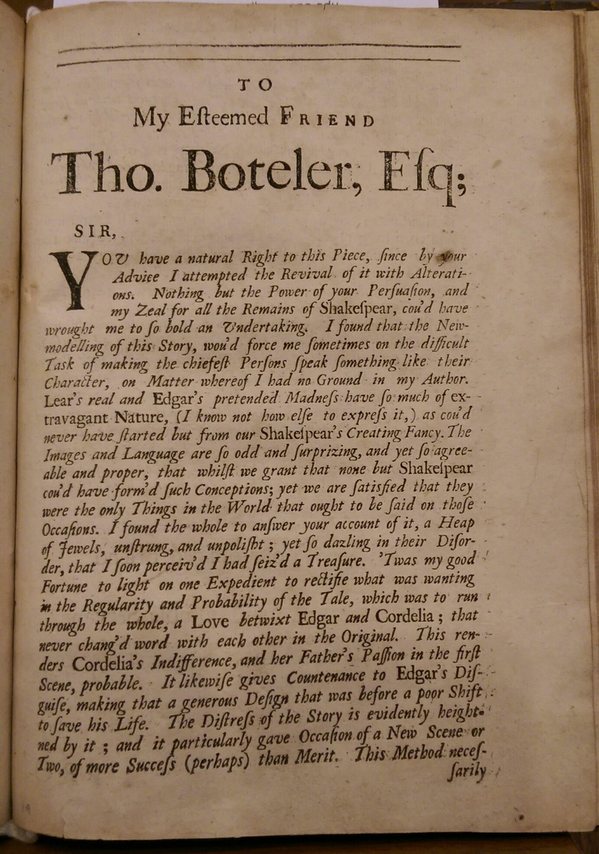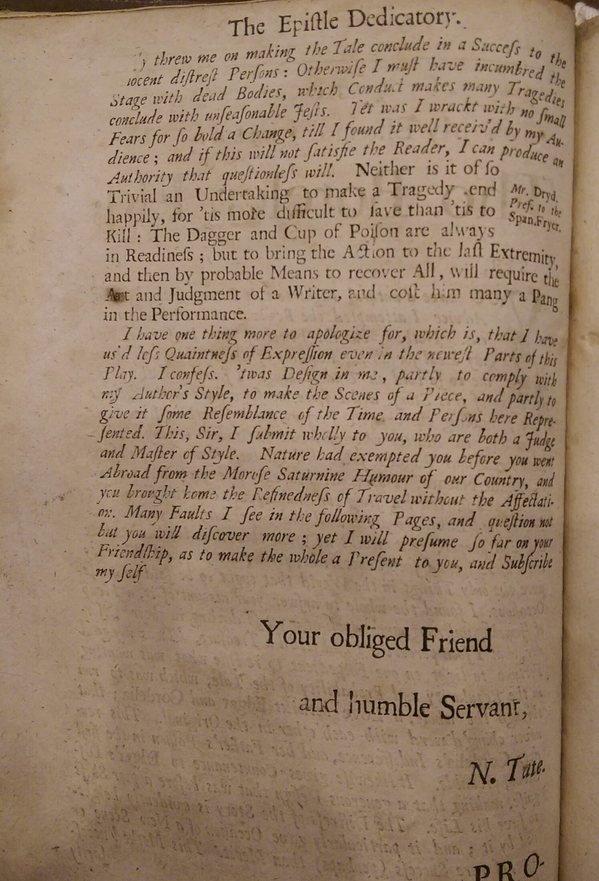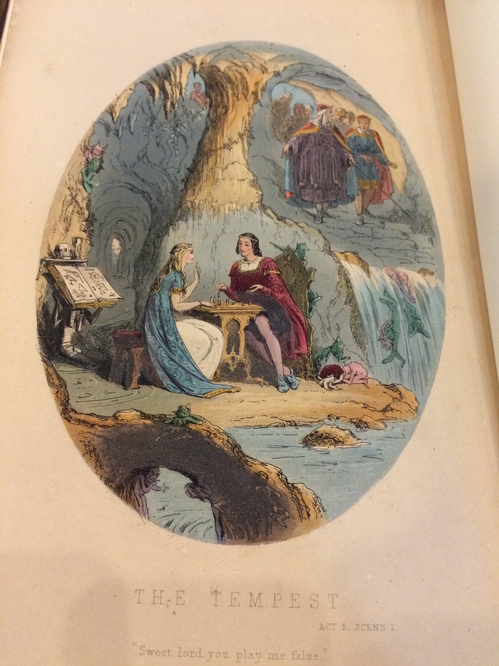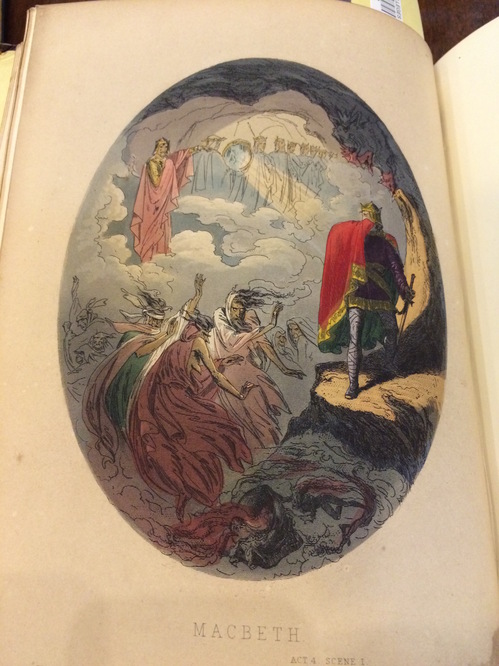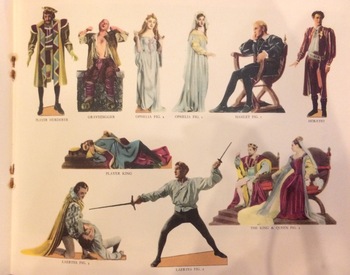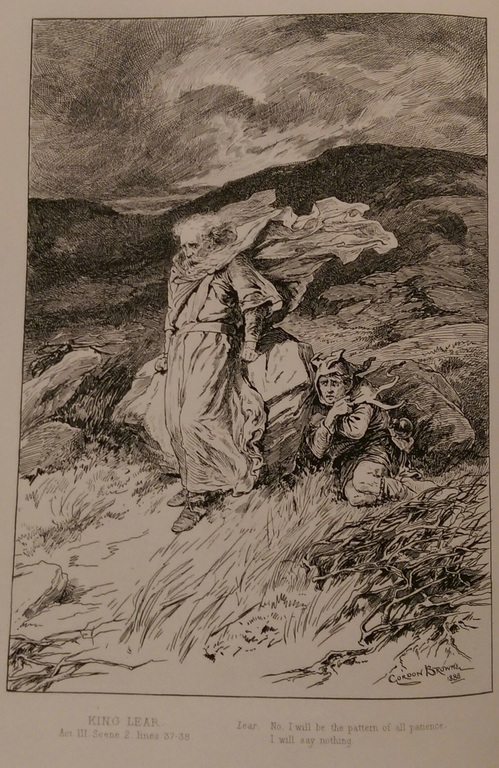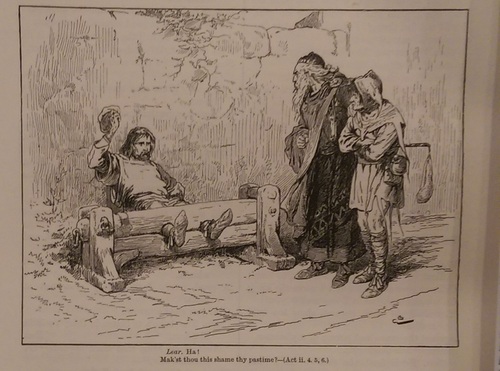I have (finally) finished the foldering process!
Lear Woodcuts at Denison
Reading with Extra-illustrated Shakespeare
Courtship the King Henry V Way
In a Shakespeare class I took last semester, I read a great article by Phyllis Rackin and Jean Howard that explained how Henry V shows the shift of masculinity at the time Shakespeare wrote the play. Before this play, masculinity was linked to nobility through blood, i.e. preservation of a bloodline, whereas Henry V is the first of his plays to show masculinity as a result of achievement or conquest in battle and in love. Lust was once a feminine, emasculating vice, because a woman could dilute the bloodline and thus remove your masculinity, so denying women sex was seen as an expression of dominance. In this play, lust belongs to men as a tool of power; successfully seducing someone shows that same male dominance.
Near the end of Henry V (spoilers ahead!), King Henry seduces the French princess Katherine and marries her, thus sealing his control over France and validating his authority as a man and as a leader. This scene is often seen as a sort of coercion or forced wedding; Katherine barely speaks any English (and barely speaks at all) while Henry does the wooing, marrying her with little preamble and little input from her. It is likely that at different times in history, this scene was more or less romantic and organic; nowadays, with the emphasis on female autonomy that has been growing, this sort of seduction becomes problematic and unromantic, at least as I see it.
In this picture, drawn by an unnamed reader, Katherine looks very young, swaddled and protected by a large hood. She looks almost sad, unmoved by the “conversation” taking place right next to her face. Maybe this reader thought the seduction was romantic and reciprocated; we can’t know just from looking at this image. But the way that Katherine is shown – her clothes, her face, her expression – all contribute to a narrative about what this seduction means to the seduced party. Going through the scene with this mental image is very different from the next image:
This Katherine, an image from the same copy of the play (by a different artist) shows a classic princess smiling sweetly in her pretty gown. Her royal status is emphasized by the crown and scepter and her romantic side comes through thanks to the flower and the sweet expression on her face, just as King Henry wanted if he is indeed partially using her to validate his authority. This Katherine fits the bill for what one might expect a willing contributor to a royal marriage to look like. If this Katherine comes on stage, the wedding is more likely to be a happy occasion than something done strictly for political gain, or unwillingly.
This photo is, to me, the most interesting. Entitled “The Wooing of Henry V,” here we have Katherine sitting forlornly on a throne, accepting Henry’s grand physical expression of love and desire. This Katherine looks like an adult woman, sitting in a position that normally would be one of power. She is a very different Katherine from the first two I’ve shown you, but at least in this still frame, we still see nothing to suggest that she wants this marriage as much as he does. Even the title gives a sense that this is not a conversation; it is a directed seduction. Henry woos Katherine, an unmoving, possibly undesirous female.
To me, this seduction style is a flaw in the personality of the manly, charming Henry V. But to some, this scene is utterly romantic, an expression of love at first sight and the strength of love even with a significant language barrier. These opposed understandings of the same scene and relationship could reflect shifting cultural values over time, or it could simply be a result of who I am and how I was raised. The beauty of costume, design, and acting is that these elements combined could make me see an entirely different interpretation of the scene; possibly, if a charming Henry wooed the girl in purple from the second photo, I would be more on board with the seduction, at least in that production. The creators of different productions have a lot of power over interpretation, and they have no choice but to use and thus impact my understanding of the play.
Artistic Interpretations of The Tempest
This week, in preparation for our exhibit, I’ve been thinking more about versions. More specifically, different versions of the same thing. So today, I’ll be talking about four different versions of The Tempest. I found some pretty cool stuff in the Honnold special collections, as well as in the collection at Denison Library (Scripps College). Not only did I see beautifully illustrated editions with the unaltered text, but I even found two operas.
Normal
0
false
false
false
EN-US
JA
X-NONE
/* Style Definitions */
table.MsoNormalTable
{mso-style-name:”Table Normal”;
mso-tstyle-rowband-size:0;
mso-tstyle-colband-size:0;
mso-style-noshow:yes;
mso-style-priority:99;
mso-style-parent:””;
mso-padding-alt:0in 5.4pt 0in 5.4pt;
mso-para-margin:0in;
mso-para-margin-bottom:.0001pt;
mso-pagination:widow-orphan;
font-size:12.0pt;
font-family:”Times New Roman”;}
In the vein of co-creative influence
and difference, I want to quickly talk about two illustrated editions and the
illustrator’s choices (which impact a reader’s interpretation). The first book
contains watercolor illustrations, creating a softer overall image. The second
takes a more whimsical, almost sinister or mischievous approach.
In this first edition, Ariel is more
human than magic. He could be a fairy or an ordinary man based on his
appearance.
In contrast, the second edition
portrays his as more spritely, with more pointed features, as well as more
magical characteristics.
We see Ariel as a formless force,
clearly a magical being, but also with the suggestion that he himself is
elemental, is the wind.
These two different sets of
illustrations further point to the versatility of interpretation in The Tempest (as well as many of
Shakespeare’s other works). In each one, we see an artistic twist, but in each
we can see the core of the source, Shakespeare’s magical tale of an abandoned
island where music is in the wind and creatures lurk just out of sight.
Approaching the light (at the end of the tunnel)
Nahum Tate’s Redesigned Lear
Court Masques and the Illustrated Component of Performace
Normal
0
false
false
false
EN-US
JA
X-NONE
/* Style Definitions */
table.MsoNormalTable
{mso-style-name:”Table Normal”;
mso-tstyle-rowband-size:0;
mso-tstyle-colband-size:0;
mso-style-noshow:yes;
mso-style-priority:99;
mso-style-parent:””;
mso-padding-alt:0in 5.4pt 0in 5.4pt;
mso-para-margin:0in;
mso-para-margin-bottom:.0001pt;
mso-pagination:widow-orphan;
font-size:12.0pt;
font-family:”Times New Roman”;
mso-bidi-font-family:”Times New Roman”;
mso-bidi-theme-font:minor-bidi;}
I’ve been thinking and reading a lot about court masques
this week, specifically about the style Ben Jonson worked to form. For those of
you who don’t know, court masques were theatrical productions for British
nobles containing music, dance, songs, and poetry in varying degrees. In
addition to the dancing, performance, and revels, they included elaborate set
designs and special effects.
Now, I know Jonson isn’t Shakespeare, but they were
contemporaries, and in many ways, the masques were like plays of the time.
Though the two inhabited different spheres, private versus public, and dealt
with different notions of fiction and reality within the space of the
performance, both may be read as literature. By that, I mean that the play
remained isolated, whereas the masque could blur the line between fiction and
reality because many times, nobles themselves would act in the performances.
Other times, the masquers would dance with members of the audience, uniting the
actors and observers in an in-between space of active entertainment. Such an
amalgamation between fictional characters and real life persons sets the tone
for further combinations of different realities.
Why, you ask, have I been looking at something that is
definitively not Shakespeare? Well,
it’s because I’ve been finding several items in the Special Collections that
fall into the category of masque using Shakespeare’s plots and/or characters. And
on the note of combining different realities, one in particular performs a sort
of literary mash-up or crossover, making characters from Macbeth and Henry IV
interact with Greek Gods, such as Apollo and Minerva, and even muses, like
Comedy and Tragedy.
Not only does this masque mix the different worlds of
Shakespeare’s plays, it also combines them with classical mythology. Not only
does this fall into the masque tradition of using Classical figures to augment
the performance, but it sets up Shakespeare as worthy of such comparison. In a
way, the masque suggests that Shakespeare’s characters are as powerful and
everlasting as the Greco-Roman gods.
The court masque, in a way, lives on through printed
editions of Shakespeare’s plays by drawing on the concepts of spectacle,
design, and illustration as accompaniments to the text of a performance. A few
examples show colorful scenes from The
Tempest and Macbeth.
Both place the characters in a fictional world, choosing
instead to make the scenes they depict works of literature rather than theatre.
Through these pieces (including the masques), we see a form of genre
manipulation taking place, showing the versatility of Shakespeare’s works.
That’s just another reason to appreciate Shakespeare. And for further genre manipulation, watch The Lion King (a version of Hamlet), or even take a gander at a graphic novel based on the Bard and his characters (called Kill Shakespeare, and you can find it here through the library).
Hamlet: A Fellow of Infinite Jest
This week’s SpeCol (Special Collections) Scoop comes from the Philbrick Collection, which is a massive collection of drama-related media donated to the school by the Philbrick family. One of these boxes is a collection of sets for toy theaters, which were somewhat like dollhouses with removable backgrounds and paper dolls. From what I can tell, toy theater companies chose short plays, gave plot synopses, usually in one act, provided the backgrounds for each scene, and gave the characters in various necessary positions for the play.

